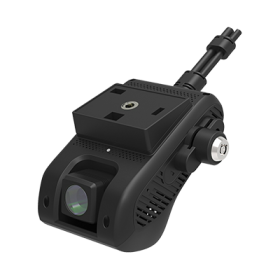If you’re a fleet vehicle owner, you may be wondering where to connect your dash camera to ensure maximum power efficiency without draining your battery. Should you use the cigarette lighter or the fuse box? In this article, we’ll explore the pros and cons of each option and provide tips for ensuring your dash camera doesn’t cause unnecessary battery loss.
First, let’s discuss the two options for powering your dash cameras: the cigarette lighter and the fuse box.
The cigarette lighter, also known as the auxiliary power outlet, is a common way to power your dash cameras. The outlet is typically located in the center console or dashboard of your vehicle and is designed to power accessories like phone chargers or GPS devices.
The fuse box, on the other hand, is a more direct way to power your dash camera. The fuse box is a panel located in your vehicle’s engine compartment or interior that contains fuses for various electrical components in your vehicle.
Cigarette Lighter vs. Fuse Box: Which is Better for Your Dash Camera?
When it comes to connecting your dash camera to a power source, you have two main options: the cigarette lighter or the fuse box.
A cigarette lighter is a convenient option because it’s easily accessible and can be used to power a wide range of accessories, including dash cameras. However, because the cigarette lighter is designed primarily for charging devices like cell phones, it may not provide enough power for your dash camera depending on the model and settings. Additionally, because the cigarette lighter is typically connected directly to the battery, it can continue to draw power even when the vehicle is turned off, potentially leading to a drained battery.
On the other hand, the fuse box is a more reliable option because it allows you to tap into the vehicle’s electrical system without drawing power when the vehicle is turned off. By using a hardwiring kit, you can connect your dash camera directly to the fuse box and ensure that it only operates when the vehicle is running. This can help to extend the life of your battery and prevent unnecessary battery loss over time.
So, which is the better option for powering your dash cameras? The answer is…it depends.
Using the cigarette lighter to power your dash camera is a popular option because it’s easy and convenient. However, it’s important to note that the cigarette lighter is not always a reliable source of power. The outlet may not provide a consistent voltage, and it may not be able to handle the power requirements of your dash cameras.
Using the fuse box to power your dash camera is a more reliable option. The fuse box provides a direct connection to your vehicle’s electrical system and can handle the power requirements of your dash cameras. However, it’s important to note that accessing the fuse box can be more complicated than using the cigarette lighter. You may need to consult your vehicle’s owner’s manual or a professional mechanic to ensure that you’re connecting your dash camera to the correct fuse.
5 Tips for Connecting Your Dash Camera to the Fuse Box
1.Choose the Right Fuse
The first step in connecting your dash camera to the fuse box is to choose the right fuse. Look for a fuse labeled “ACC” or “accessory” to ensure that the camera only draws power when the vehicle is turned on. Avoid using fuses labeled “constant” or “battery,” which provide power at all times, potentially leading to a drained battery.
2.Use a Hardwiring Kit
A hardwiring kit is a device that connects your dash camera directly to the vehicle’s electrical system, ensuring that it only draws power when the vehicle is turned on. Most hardwiring kits are easy to install and require no special tools or expertise.
3.Choose a Suitable Location
When installing your dash camera, choose a location that offers a clear view of the road and doesn’t obstruct the driver’s vision. Additionally, make sure the camera is mounted securely to prevent it from shifting or falling while driving.
4.Check the Voltage
Make sure to check the voltage requirements of your dash camera before connecting it to the fuse box. Different models have different voltage requirements, so it’s important to ensure that the camera is compatible with your vehicle’s electrical system.
5.Consider a professional installation
If you’re not comfortable installing your dash cameras yourself, consider hiring a professional to do the job. A professional installer can ensure that your cameras are installed correctly and that they’re receiving a reliable source of power.
In conclusion, connecting your fleet vehicle dash camera to the cigarette lighter may be a convenient option, but it can also lead to unnecessary battery loss. By using a hardwiring kit to connect your dash camera directly to the fuse box, you can ensure maximum power efficiency and prevent battery loss over time. When installing your dash camera, make sure to choose the right fuse, use a suitable location, check the voltage requirements, and mount the camera securely. With these tips in mind, you can enjoy reliable footage from your dash camera without worrying about battery drainage.
Why Jimi IoT?
Jimi relies on innovative solutions for driver status monitoring and vehicle tracking for fleet management, more effective driver tracking, recording, notification, monitoring and efficient fleet management.
Jimi has more than 20+ years of experience in the loT/loV industry and a team of experts to assist you in the adoption. We offer ready-todeploy solutions (with IoT SIM cards for worldwide connectivity) as well as OEM, ODM.and OBM services to suit your industry-specific needs.
 EN
EN ES
ES PT
PT TH
TH VN
VN JP
JP



